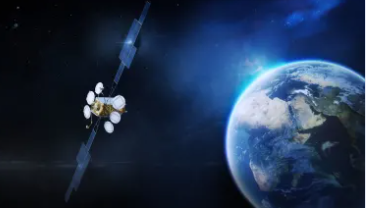- A reduction in operational costs
- More efficient and effective actions
- Faster decision making based on real-time data
- Streamlined operations
- Better security, sustainability and continuity
Connectivity has posed a significant challenge for those working in the agricultural industry. The remote and disconnected nature of the business has left farmers with few options when it comes to adapting technology to monitor and optimise their efforts. However, the tide is turning, and this state of affairs is set to change dramatically within the next decade.
The state of agritech
Agricultural technology, or ‘agritech’, has a vital role to play for the industry. It has already impacted the efficiency of farmers from around the world. The ability to operate remotely and use automated processes for agricultural operations enables farmers to expand and control their livelihood.
Here are a few ways agritech can help farmers:
Livestock monitoring
In certain areas, livestock can occupy massive landscapes that include mountains, valleys and plains. It is nearly impossible for farmers to manually monitor and protect their livestock from poaching, lost herds or other dangers without a significant investment in human resources.
With remote monitoring and tracking solutions, farmers can now ensure the security of their livestock and immediately be notified of any threats. This level of surveillance can observe livestock movements over rugged terrain and incorporate crucial information such as weather reports or environmental hazards for farmers to protect their animals.
Environmental and weather monitoring
Farmers are at the mercy of hazards that naturally occur on the land they farm. Both livestock and crops are impacted by shifts in weather and natural disasters such as fire, floods and hurricanes.
Gaining an early warning is essential to combat these threats. With the technology available today, farmers can get up-to-the-minute reports on these potential dangers before they even develop. This assists farmers tremendously in helping them protect their assets.
Equipment tracking
Agricultural equipment and vehicles are often used over vast stretches of land and are deployed for days at a time. These expensive assets are frequently at risk of being mismanaged, lost or otherwise damaged.
Agritech solutions enable the monitoring and tracking of remote equipment. They can provide up-to-date details on service concerns, performance metrics and other points of interest such as fuel and energy consumption.
Transport and logistics
Shipping agricultural produce from farms to processing stations around a country is a monumental task. Agritech makes it easier by providing fleet management solutions for cargo ships, trains, and trucks. Users can monitor their performance, payload and optimise their transport methods. In addition to this, farmers can also monitor and track containers, trollies and even individual pallets.
All these benefits to farmers ultimately result in the following advantages:
Despite these boons to the industry as a whole, there remains one key challenge facing agriculture sectors around the world: connectivity.
Connectivity in agriculture
While agritech is crucial to the industry, lack of connectivity has remained a significant barrier. For many agritech solutions to be effective and reliable, they require a stable stream of connectivity access. Satellite is currently the only way farmers can connect and implement these new technologies to increase their productivity, boost crop production and secure their livestock. However, recent trends and developments offer a positive future for the use of technology in agriculture.
According to Northern Sky Research’s (NSR) M2M and IoT via Satellite 11th Edition report, agriculture use cases will have one of the highest growth prospects over the next decade, especially as smallsat IoT constellations enter the market over the coming years. The number of in-service units for agricultural applications will rise from 130,000 in 2019 to over 790,000 in 2029, with 63% of growth via smallsats, attributed to animal tracking, heavy equipment and meter reading.
The growth of and investment in IoT connectivity solutions is good news for many farmers around the world who require robust, reliable and portable equipment. IoT connectivity solutions such as Eutelsat’s IoT Services portfolio will be able to offer greater bandwidth and accuracy for farmers who use agritech applications.
The role of satellite for agritech connectivity
Due to the remote nature of agriculture operations, satellite will remain the primary connectivity solution for farmers. Recent developments in IoT and satellite connectivity will prove vital to the successful implementation of agritech solutions.
Here are a few recent developments of how satellite solutions will support agritech around the world.
Cost-effective hardware
Hardware costs are always a critical consideration for farmers, especially owner-operator farms in developing countries. However, smallsat terminals cost-effectively enable remote connectivity while only needing a small amount of power. These terminals will encourage growth in developing countries, and around 80 000 units are expected to be implemented in each of Asia, Middle East, Africa and Latin America by 2028.
Low earth orbit satellites
Satellite solutions have traditionally been expensive to access and use, however with the expansion of low earth orbit satellites this concern is quickly dissolving. Low earth orbit (LEO) satellites will soon offer reliable connectivity to remote areas and IoT applications without increasing the cost or energy consumption of those solutions.
Eutelsat’s own fleet of LEO satellites, called ELO (Eutelsat LEO for Objects), will launch in 2021 offering stable and reliable IoT support for industries and businesses. This fleet will provide a satellite link from anywhere in the world, complementing low-power wide-area wireless technology, demonstrating the complementarity between terrestrial networks and satellite technology.
Portable. Long-life equipment
Small satellite constellations such as Eutelsat’s LEO satellites enable the use of terminals and other technology that offers long battery life and small, portable design. This allows farmers to use tracking devices that can be as small as a US quarter coin to track animals and equipment quickly and accurately without having to invest thousands of dollars for maintenance, training and equipment.
Join Eutelsat and connect the dots
The agriculture industry is quickly evolving to include IoT solutions as part of their daily business activities. IoT has demonstrated the ability to revolutionise the way farmers operate, enabling them to protect their assets, boost their production and identify improvements across their operations.
Eutelsat, as a reliable satellite service provider, has led the charge on the IoT revolution for agriculture as well as countless other industries. Solutions such as IoT FIRST and technology like the ELO nano-satellite fleet will form a critical aspect of the IoT technological revolution.
If you would like to find out more about Eutelsat or some of the ways satellite can help your business, contact Eutelsat today, or visit our website for more information.



